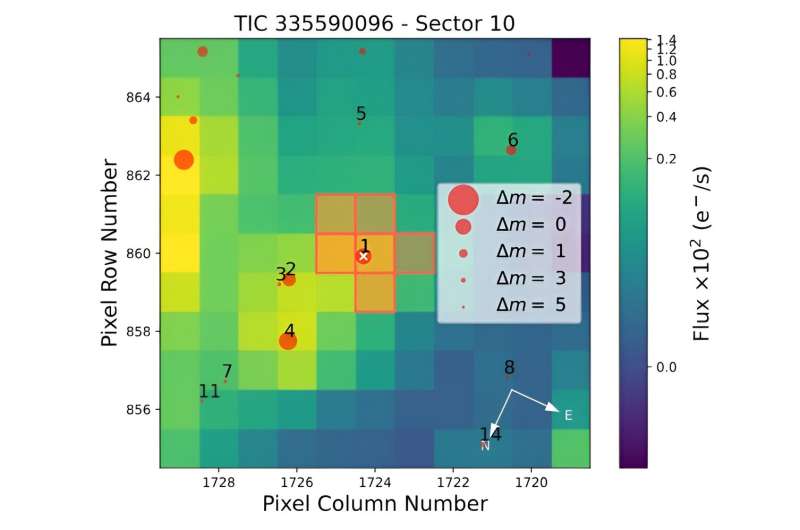August 10, 2023 report
This article has been reviewed according to Science X's editorial process and policies. Editors have highlighted the following attributes while ensuring the content's credibility:
fact-checked
preprint
trusted source
proofread
Saturn-sized exoplanet discovered with TESS

Using NASA's Transiting Exoplanet Survey Satellite (TESS), an international team of astronomers has discovered a new giant exoplanet transiting a nearby M-dwarf star. The newfound alien world, designated TOI-4860 b, is comparable in size and mass to Saturn. The finding is reported in a paper published August 2 on the pre-print server arXiv.
TESS is conducting a survey of about 200,000 of the brightest stars near the sun with the aim of searching for transiting exoplanets. So far, it has identified over 6,700 candidate exoplanets (TESS Objects of Interest, or TOI), of which 373 have been confirmed so far.
Now, a group of astronomers led by Jose Manuel Almenara of the Grenoble Alpes University in France, reports the confirmation of another TOI monitored by TESS. They identified a transit signal in the light curve of an M-dwarf star known as TOI-4860. The planetary nature of this signal was confirmed by ground-based follow-up photometric observations.
"We report here the validation and mass measurement of TOI-4860 b. Ground-based photometry confirms that the transits around TOI-4860, initially identified by TESS photometry, are produced by a giant planet," the researchers wrote in the paper.
TOI-4860 b has a radius of nearly 0.77 Jupiter radii and its mass is estimated to be 0.27 Jupiter masses, what yields a mean density of 0.75 g/cm3. The planet orbits the host star every 1.52 days, at a distance of some 0.018 AU. The equilibrium temperature of TOI-4860 b was calculated to be 694° K.
Given that TOI-4860 b is very close to its host star, the astronomers assume that the system undergoes strong tidal interactions. These interactions distort the planet and lead to orbital decay.
The parent star TOI-4860 has a spectral type M3.5 and is about one third the size and mass of the sun. The effective temperature of TOI-4860 is approximately 3,255° K and its metallicity is at a level of 0.27. The star is located around 262 light years away.
The researchers also found an additional signal in the radial velocity data, suggesting the presence of another planet in the TOI-4860 system. This planetary candidate has an orbital period of about 427 days and its mass is estimated to be at least 1.66 Jupiter masses.
"This raises the possibility that TOI-4860 b ended up in its small-periapsis orbit through planet-planet scattering or Kozai resonance with the outer planet, and then became circularized by tides," the authors of the paper concluded.
Summing up the results, the astronomers noted that TOI-4860 b joins the small set of massive planets found around mid-to-late M-dwarfs and is an interesting target for atmospheric characterization with transmission spectroscopy.
More information: Almenara et al, TOI-4860 b, a short-period giant planet transiting an M3.5 dwarf, arXiv (2023). DOI: 10.48550/arxiv.2308.01454
Journal information: arXiv
© 2023 Science X Network





















